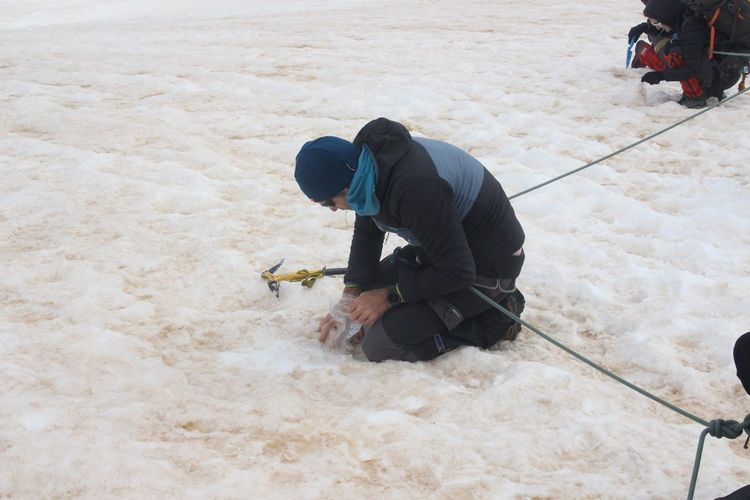"The sea starts here" is a project by One Ocean Foundation, highlighting the importance of viewing the water cycle as an integrated system: what happens at the mountain peaks has consequences for valley and marine ecosystems.
This holistic perspective is crucial to tackling global challenges such as climate change and pollution, which require an interdisciplinary approach and cooperation across science, education, and awareness initiatives.
The project runs in parallel with the Foundation’s research activities in the Mediterranean Sea, where the same pollutants analyzed in the glaciers are being monitored, creating a link between high-altitude environments and marine ecosystems, and reinforcing the message that protecting water at its source means safeguarding also the health of the ocean.
Objectives
Research
Map the contamination levels of glaciers and monitor their pollution status, identifying pollutant classes and contamination sources.
Education
Develop school programs and activities to increase knowledge among younger generations about the importance of the water cycle, pollution, and the impacts of climate change.
Awareness
Spread awareness about the urgent need to protect the environment, emphasizing how seemingly distant ecosystems, such as mountains and seas, are deeply interconnected.
Glaciers studied
Results
In collaboration with the Department of Environmental Science and Policy at the University of Milan, researchers collected supraglacial debris samples from 15 Alpine glaciers and from the only Apennine glacier, the Calderone, currently in sharp decline. The samples were analyzed to detect the presence of heavy metals (Fe, Al, Mn, Pb, Cd, Hg, Zn, and others) - elements naturally present in the environment but potentially toxic at high concentrations - and persistent organic pollutants – POps– such as DDT, PCB, and HCB), which are human-made chemicals.
This research led to the creation of the first comprehensive map of the contamination status of Italian glaciers.
On-field activities




















In-depth analysis: Glaciers and global pollution
The accelerated retreat of glaciers, driven by rising global temperatures, has consequences that go beyond the simple reduction of water reserves and the rise in sea levels: it also brings a new risk, namely the release of pollutants that have accumulated and remained trapped over decades.
These contaminants, coming mainly from urbanized areas through atmospheric transport or local sources such as mines, ski resorts, or war remnants, remain trapped in the ice for long periods. As glaciers melt, they are released into the environment, threatening water quality and the health of downstream ecosystems. This phenomenon clearly demonstrates how mountains and seas are closely connected through the water cycle.
Trace element and organohalogen compound contamination in the supraglacial debris of italian glaciers
Partners


